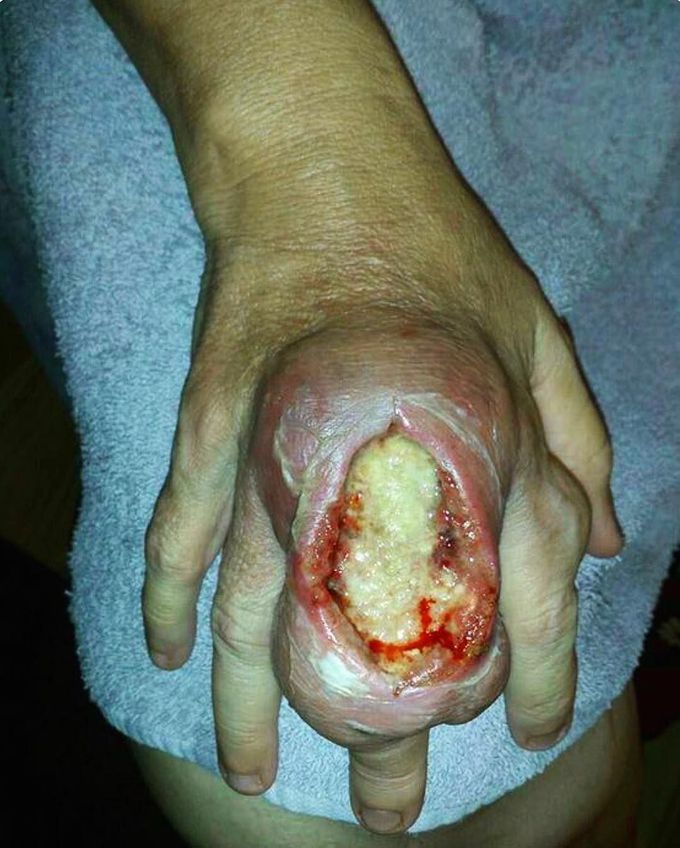


Your worst nightmare, this photo shows a brown recluse spider bite of the finger after 10 days! As unbelievable as this might sound, this person got bitten by a spider, but little did he know that it had been a brown recluse spider, whose venom is known to destroy cartilage, as well as soft tissue and skin. Leaving it untreated, allowed the venom to cause this lesion. This venom contains a rare protein that can cause a lesion, or a much less common, but more dangerous, systemic reaction in humans, depends on the amount of venom injected. Reactions due to brown recluse spider bites are a fever, the chills, itching, going into shock, vomiting; but the most common response is inflammation that after one to two days can develop into a "dark lesion" surrounding the bite site. The blackening, or necrosis, of the skin is dead skin cells, evidence of the immune system's efforts to prevent spread of the toxin by preventing blood flow to the affected area. It can be also dry, blue-gray or blue-white, with an irregular sinking patch with torn edges and extremely swollen and red with the open wound ranging anywhere from a few centimeters to a few inches in size.

